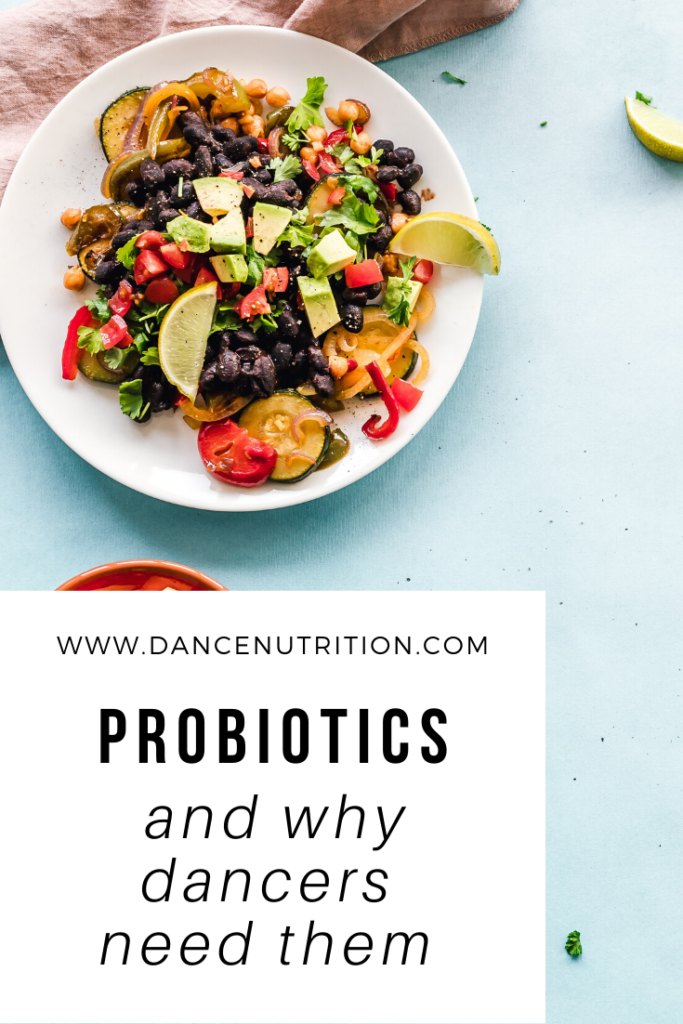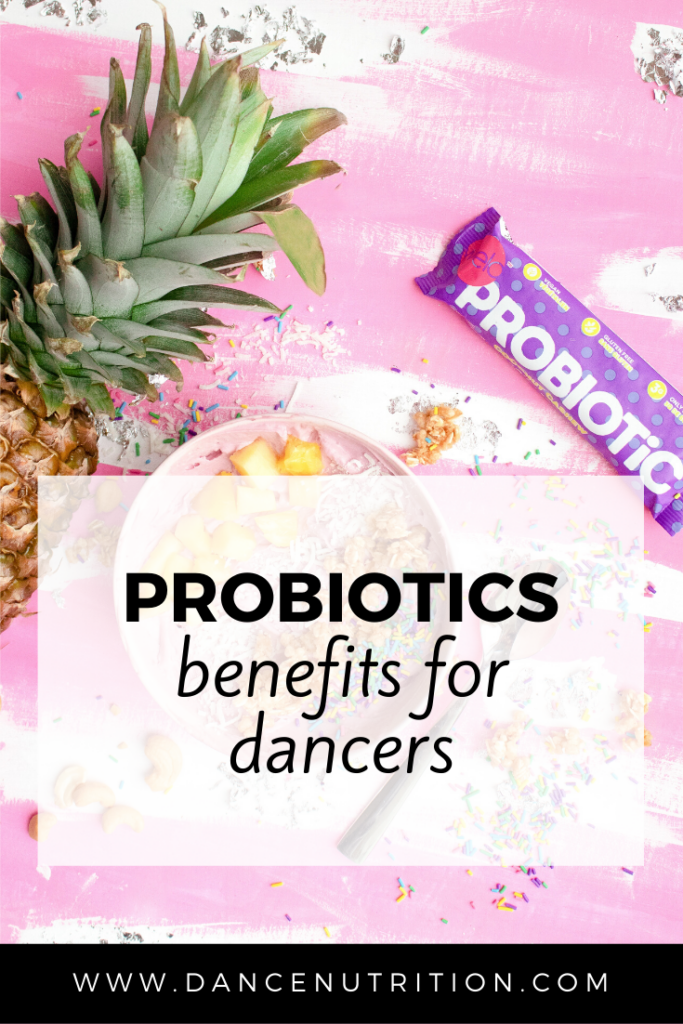Under normal circumstances, the human digestive tract is home to a diverse community of microbes (AKA bacteria) that work together to support physical and mental well-being. We refer to this as intestinal microflora or, the microbiome. This post explores the myriad benefits of your microbiome, including a closer look at probiotics and why dancers should consider them as part of their nutrition plan.
What Are Probiotics?
Probiotics are the “good” guys, specifically bacteria and yeast, that work to regulate and maintain a healthy balance of those microorganisms. Probiotics come in a variety of forms. They are naturally found in fermented foods like yogurt, kefir, sauerkraut, kimchi, kombucha, and certain cheeses, as well as in dietary supplements. According to Consumer Lab, the various types of probiotics supported in research include:
- Bacillus
- Bifidobacteria
- Lactobacillus
- Streptococcus
- Saccharomyces (yeast)
The Benefits of Probiotics
Once thought to inhabit and recolonize the bad bacteria in our gut, probiotics are now shown to work in different ways. Promising research supports the benefits of probiotics, specifically regarding digestive regularity, reducing antibiotic-related diarrhea, and speeding the passage of food to alleviate symptoms of constipation, gas, and bloat.
But the benefits of probiotics and a healthy microbiome span beyond digestion. Probiotics are recognized for supporting immunity, enhancing the production of natural antibodies, and stimulating immune cells to provide an extra layer of defense against infections. Probiotics are also known to compete with harmful bacteria for access to nutrients— indirectly helping to evict those bad guys from your body. Emerging research also associates a flourishing microbiome with mental health (here’s another reference!), contributing to better mood regulation and cognitive function for improved focus and mental clarity during rehearsals and performances.
Probiotics: Quality Sources
A food-first approach is always the goal and since probiotics are found naturally in a variety of foods, it’s easy to boost your intake. Top sources include:
- Yogurt*
- Kefir (fermented milk drink rich in diverse probiotic strains)
- Tofu and Tempeh (fermented soybean product that is also a great source of protein)
- Miso (a Japanese seasoning made from fermented soybeans)
- Kimchi
- Kombucha
- Saurkraut (fermented cabbage that is not only a probiotic powerhouse but also rich in vitamins)
- Pickles
What About Prebiotics?
That’s no typo. Remember, probiotics are organisms like all organisms, they require food! Prebiotics are plant-based fibers that promote the growth of probiotics. These fibers resist digestion, allowing them to be used to produce short-chain fatty acids, which provide the nourishment needed for a healthy microbiome.
Prebiotics: Quality Sources
- Apples
- Bananas
- Garlic
- Onions
- Leafy greens
- Barley
- Oats
Prebiotics and probiotics work together to nourish a flourishing microbiome symbiotically!
When should dancers consider probiotic supplements?
Though it’s ideal to receive your probiotics from naturally occurring sources, supplements may help some and are even considered safe for the general public. When scoping the aisles, remember that diversity is key. Research suggests that a probiotic supplement containing a mixture of bacterial strains is optimal. This is because a diverse microbiome makes it less likely for a single bacterium to become dominant enough to make you sick. Benefits have been shown from probiotics containing 50 million to more than 1 trillion CFUs daily. But remember: higher CFUs don’t necessarily equal better quality or effectiveness. Make sure your supplement is third-party tested. If you’re allergic to milk, be aware that some supplements contain lactose-fermenting bacteria (ie. Lactobacilli and Bifidobacterium).
Key Takeaways: Dancers and Probiotics
The pros of probiotics are worth the hype but choose a food-first approach to letting these good guys into your system. And if you’re curious about a supplement, be sure to consult with a medical professional beforehand.
*To get the probiotic benefits from your yogurt and other dairy foods, choose a product that lists “contains live cultures” or “active cultures” rather than “made with live/active cultures.” According to Consumer Lab, the latter may signal a significantly reduced number of cultures from the heat of pasteurization.




